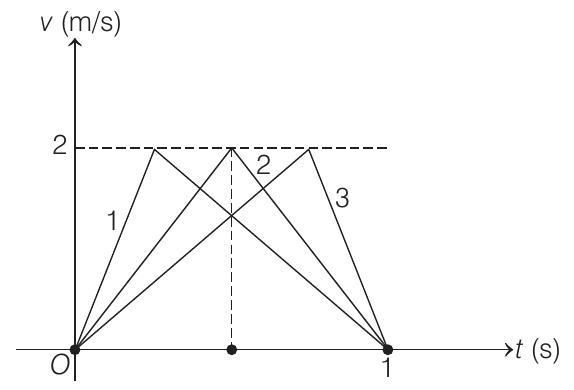Kinematics 4 Question 9
9. A particle of mass
(1993, 2M)
(a)
(b)
(c)
(d)
(1984, 2M)
Show Answer
Answer:
Correct Answer: 9. (c)
Solution:
- Since, the body is at rest at
Therefore, first the particle is accelerated and then retarded.
Now, total time
Total displacement,

If height and base are fixed, area is also fixed .
In case
In case 1 : Acceleration
Retardation
While in case 3 : Acceleration
Retardation
Hence,






